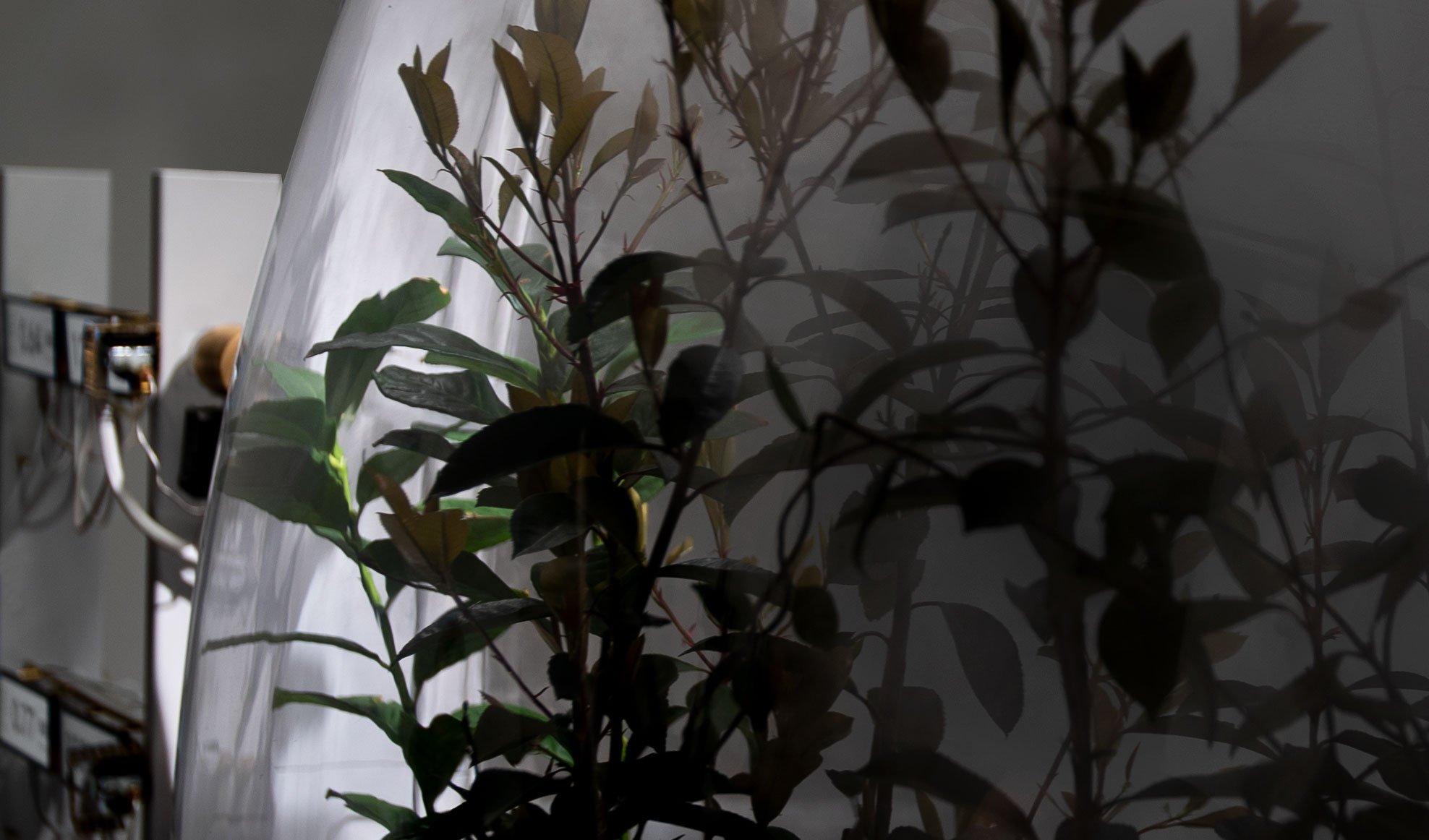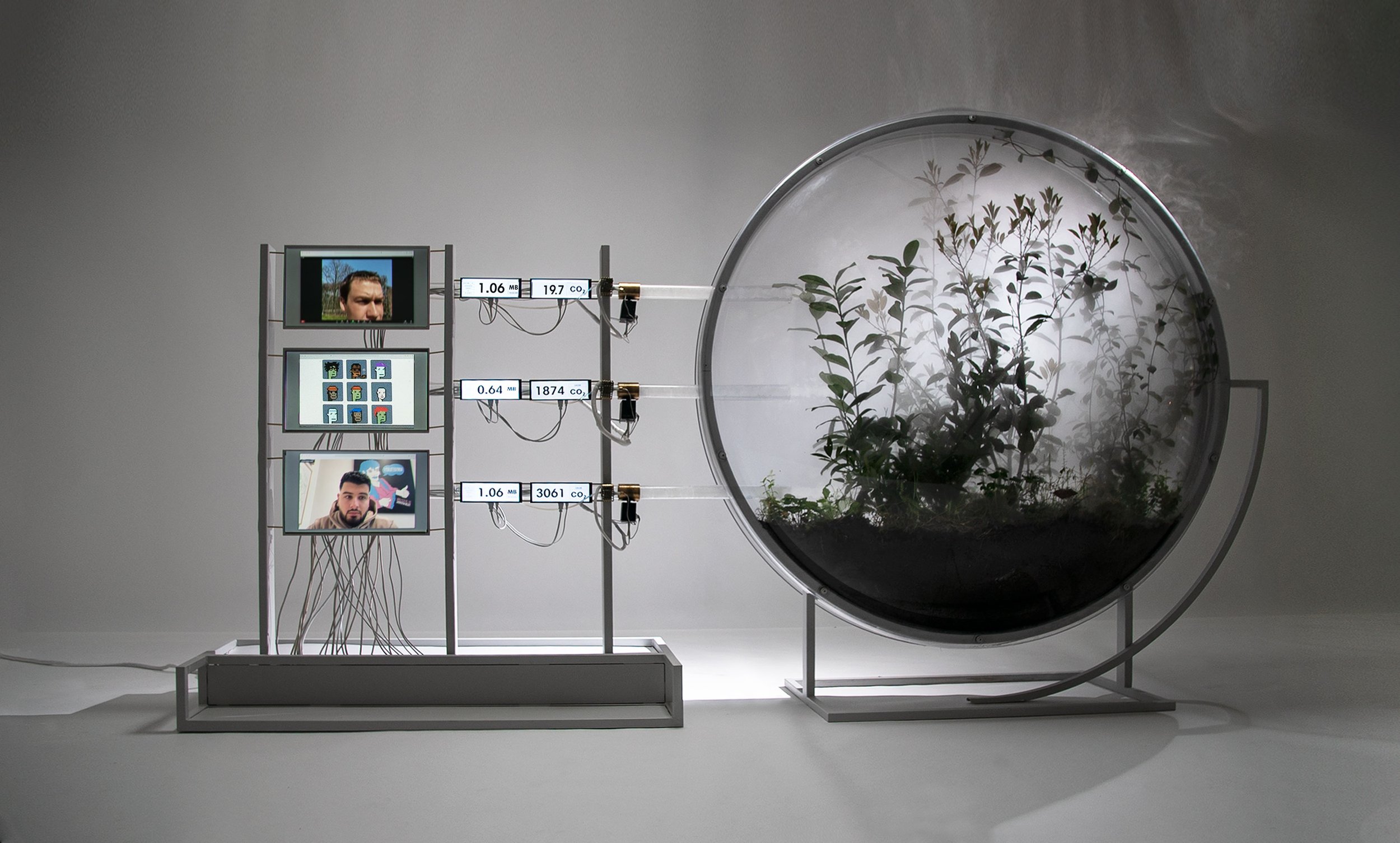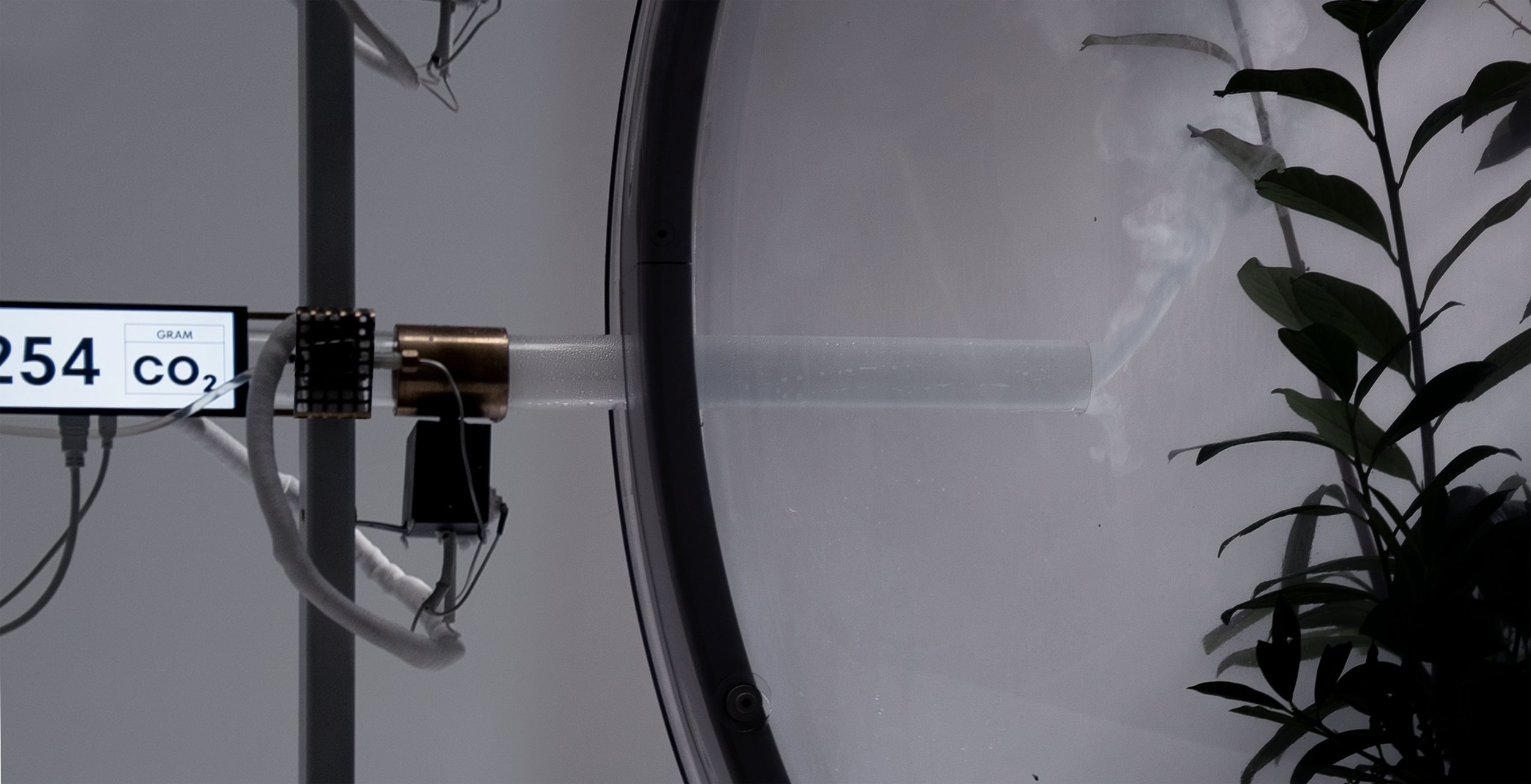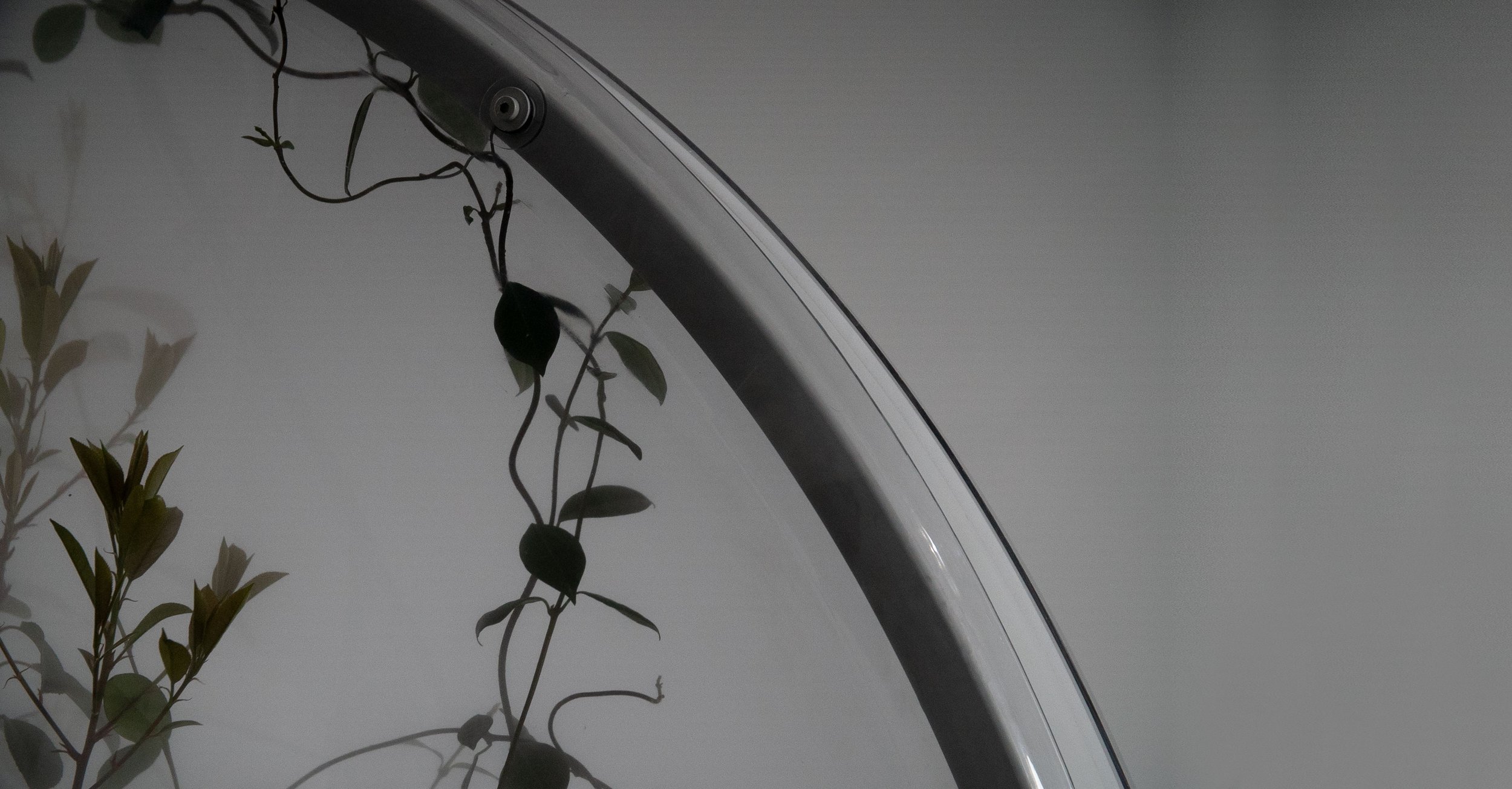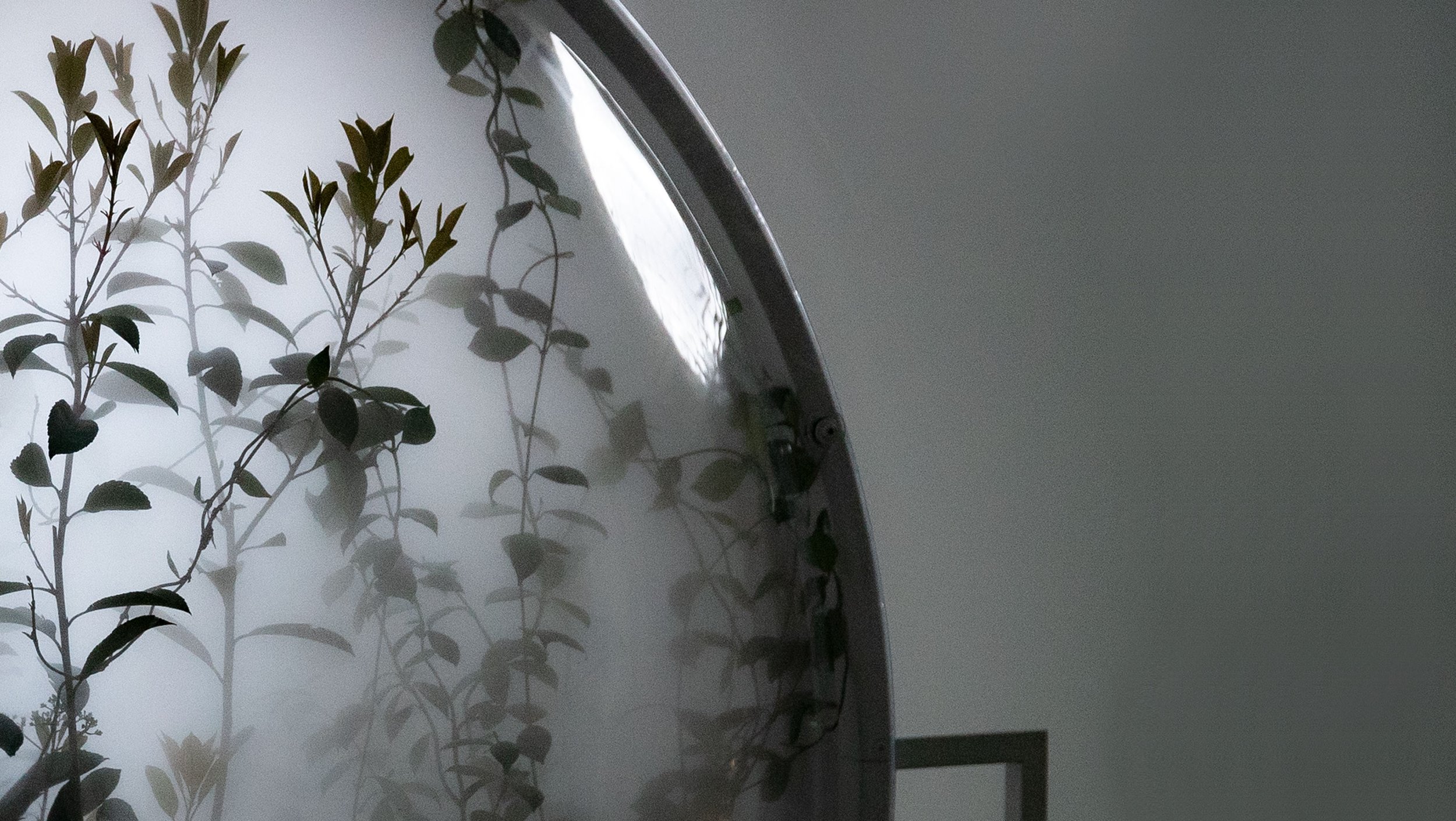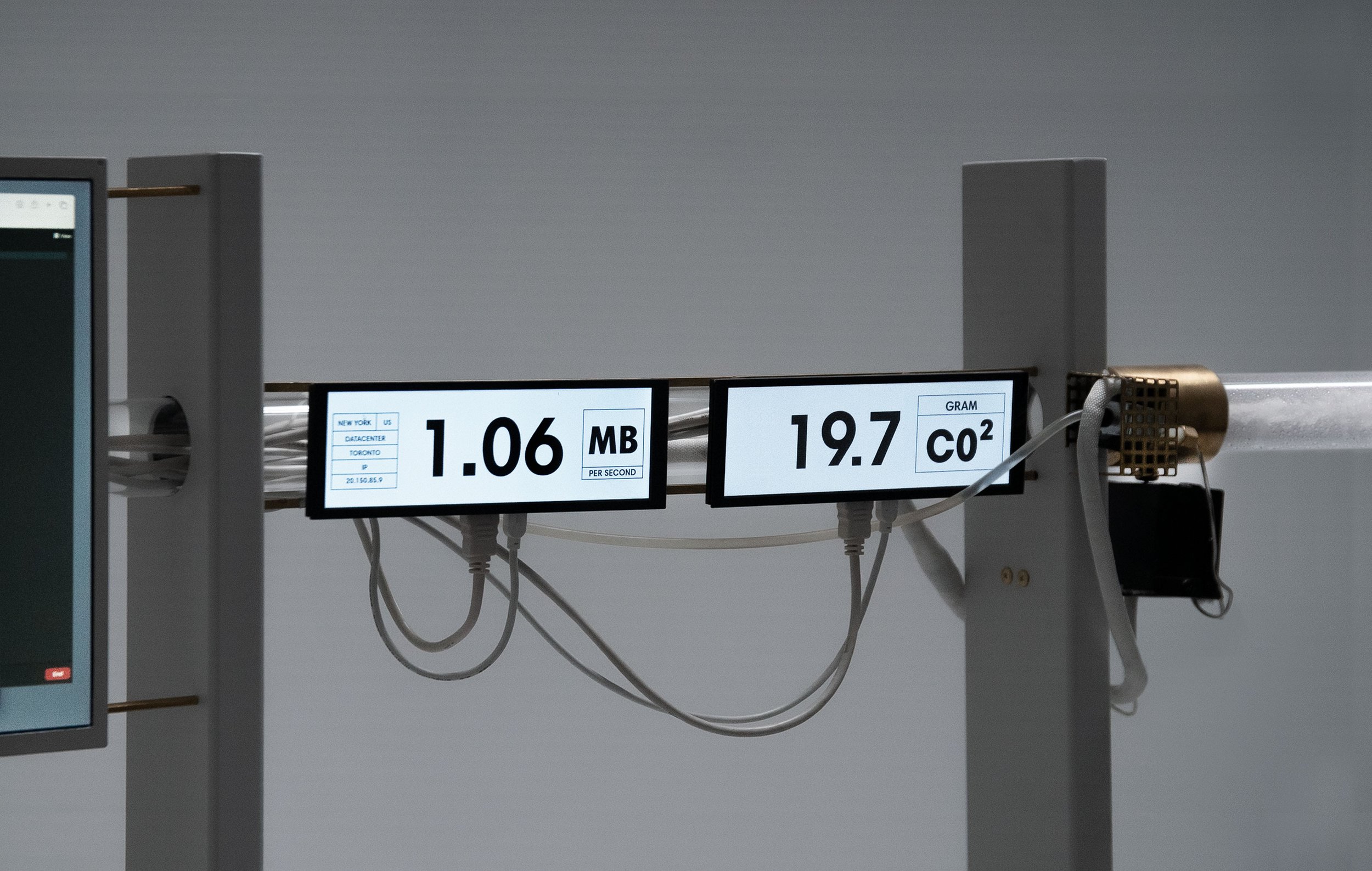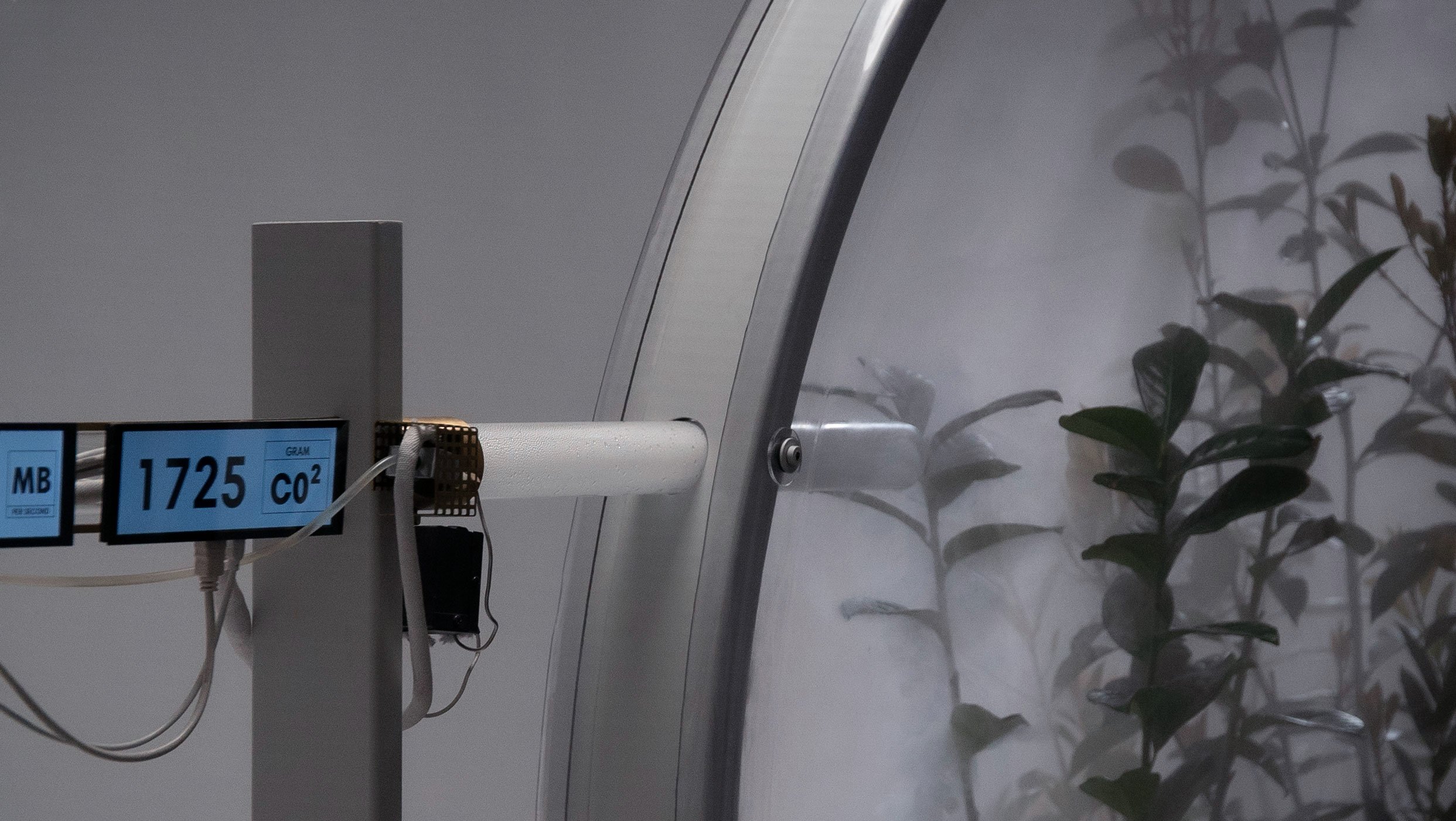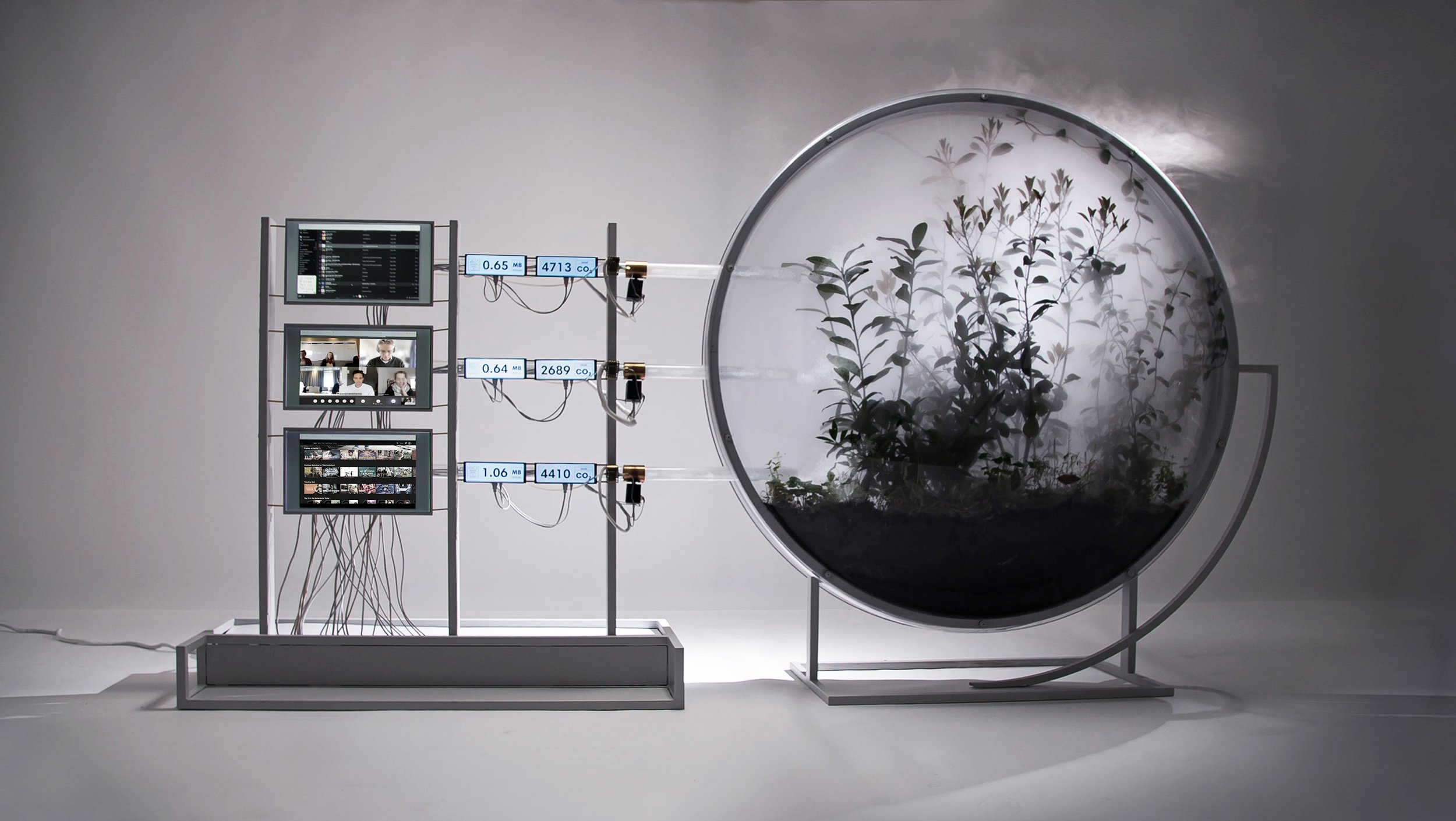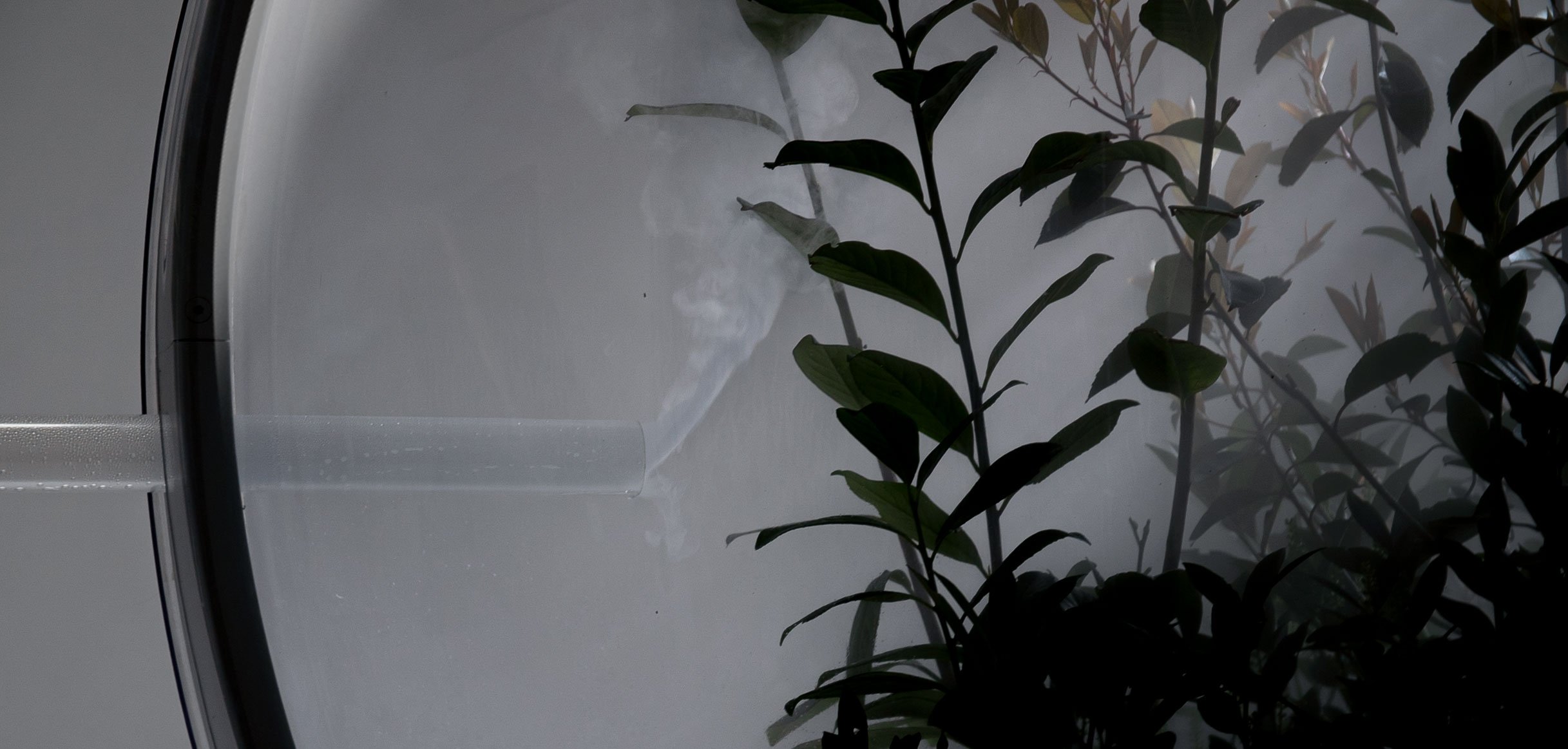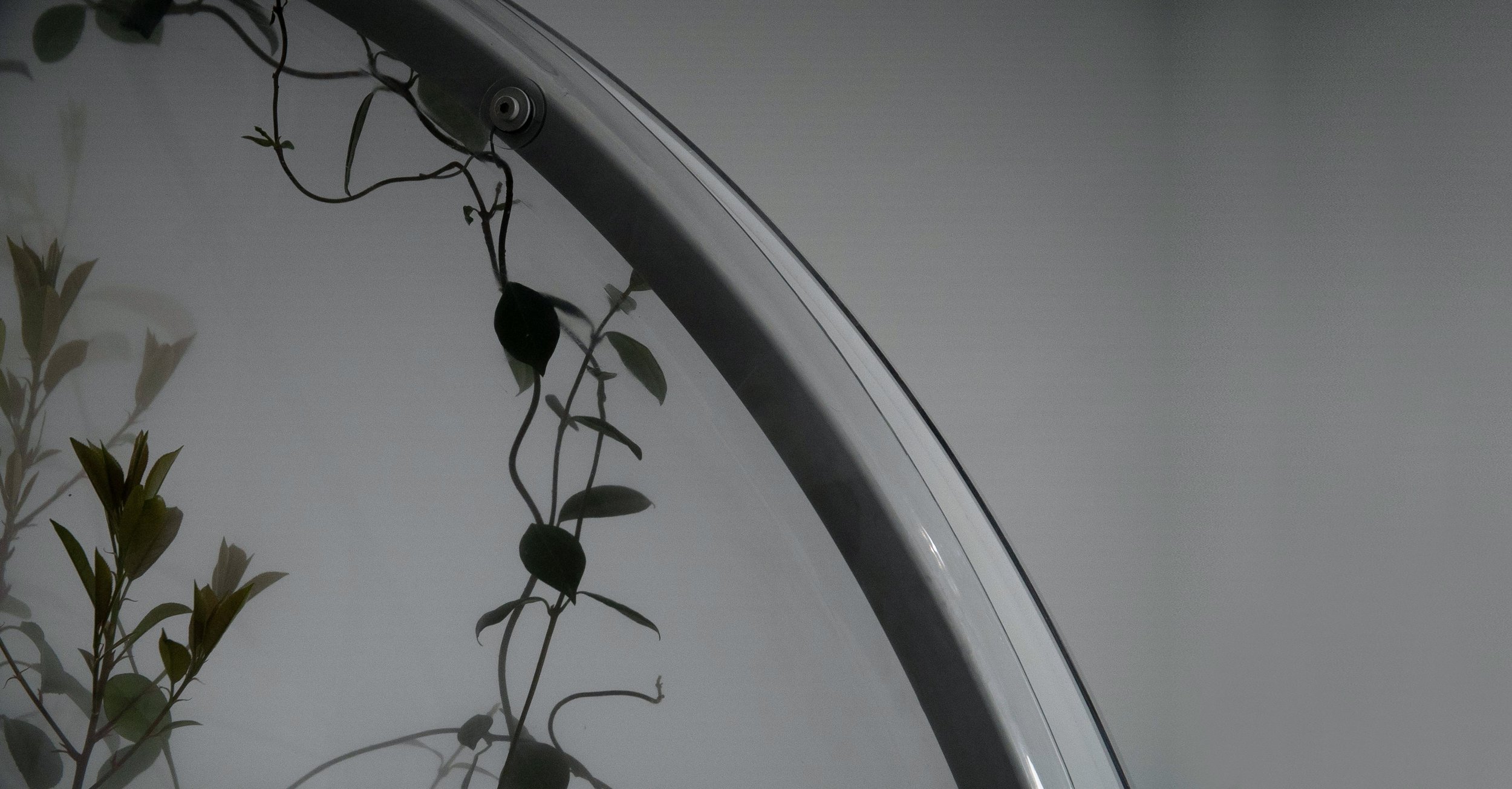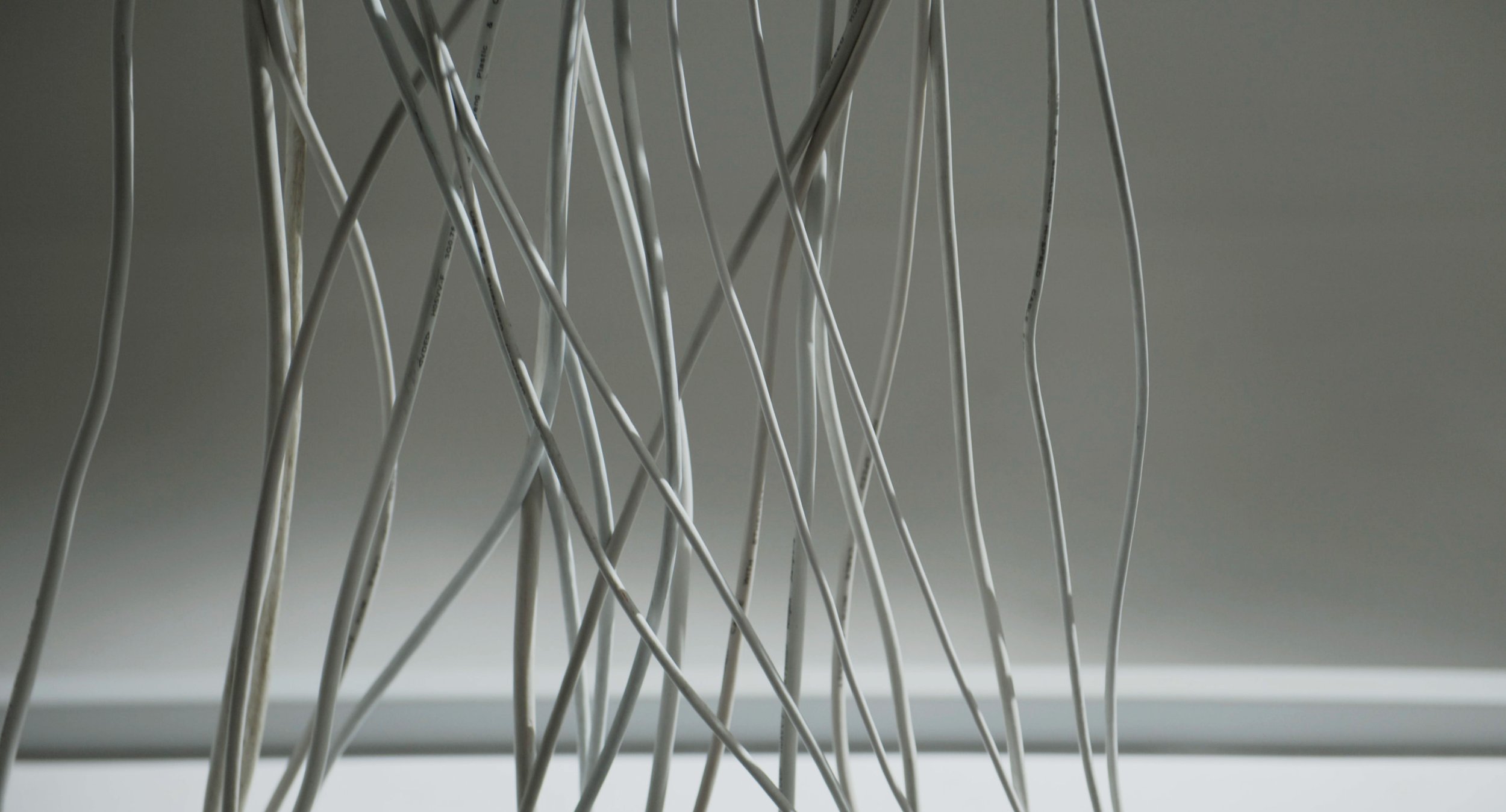MB>CO2
Uncovering the hidden impact of the internet
Every MB we use generates around 20 Grams of CO2.
This artwork translates the hidden impact of our data use into puffs of CO2.
While jumping between NFT’s, recommendation algorithms, AI training modules, and streaming platforms you can video call into this installation and it will make a live calculation of your impact on the planet.
.
I think we all experienced it. During this pandemic, our data usage has skyrocketed. Our endless Zoom meetings, Netflix binge-watching, Crypto-bro-ing and AI algorithms have all blown up, along with the emissions they create.
This art installation shows the impact created by electricity use and data center heat, resulting in a staggering 20 grams of CO2 per 1 MB used.
The work MB>CO2 visualises this hidden impact of our daily data use in a way that pulls you in. The viewer sees how visitors Zoom into the art installation. Their data usage is tracked, their carbon footprint calculated and translated into puffs of CO2 that are released into a living biotope. This reveals the hidden impact and highlights the urgent need to transition to sustainable data usage.
According to MIT an average hour on Zoom produces 160gof CO2 per person.
Between the video feeds of visitors in the artwork the piece reveals the impact of AI algorithms, NFT’s, email attachments and streaming services. It uncovers how every MB of our data usage creates heat in its data centres, consuming energy powered by coal and gas.
If you realise that an average Zoom meeting is equal to 140 meters of driving with a benzine car, a Netflix night takes up to 900g of CO2 with millions of people streaming globally, and trading your ape NFT costs the planet 400Kg of fresh air, then we need to make the shift now. This work advocates towards sustainable data use by refraining from sending a 10MB attachment photo of your holiday, using sustainable AI and giving your boss the perfect excuse to skip that next Teams meeting.
This work sets out to do more sustainable adaptations in the field.
Calculating the impact of the energy consumption of a specific service in combination with the specific hardware they use is challenging to say the least and we need more of it. The work is an advocate for open data and information transparency.
Although the amount of CO2 produced per action, stream, call, or email may be small, it can have a significant impact when combined. This work shows a planet shaped biotope where the small quantities of CO2 do matter, quickly filling the biotope with CO2 and revealing the impact on a small scale.
In terms of greenhouse gas emissions, Internet use accounts for 3.7% of global emissions, i.e. the equivalent of all air traffic in the world and this figure is expected to double by 2025 (excluding the Covid-19 effect).
Ecological artist Thijs Biersteker, known for his artworks that bring to life the impact of cigarette buts on our soil, plastics in our oceans and climate change on nature, has created this installation to create awareness around a topic that requires immediate attention, given the continual increase in our data usage.
“Sometimes making complex problems smaller and relatable helps us understand the bigger picture again”, says Biersteker
“During the pandemic, we transitioned from polluting traffic jams to polluting online data highways. The more removed we are from seeing the impact we have, the closer we come to not caring. Creating this artwork has forced me to re-evaluate my own data usage, and I hope it has a similar impact on others.”
- Thijs Biersteker, Artist.
The work MB>CO2 has an emission factory feel with a slight dystopian edge. The amount of CO2 released into the plant-filled biosphere is enormous, which necessitates certain time slots during which the installation can operate while the CO2 is cleared and the plants have time to recover.
To create this artwork we took an average on the data available. For video calling and Zoom we used 150g CO2 per hour according to the latest MIT research papers, for email attachments of 1MB we used 1 MB that creates 20 grams CO2, a Netflix hour 450g CO2 per hour. We adjust the work as companies become more transparent in their impact.
The internet as a whole emits approximately 1 billion tonnes of CO2 per year, equivalent to the amount of coal, oil, and gas burned in Turkey or Poland, or more than half of the fossil fuels burned in the UK.
According to a report by Gartner, data centers currently account for approximately one-quarter of the energy consumed (and carbon emitted) by the information and communication technology (ICT) sector as a whole, which translates to around half a percent of global CO2 emissions.*
Artist
Thijs Biersteker
Production
Woven Studio –
Produced in a sustainable way,
supplied with a material passport for future recycling
Studio Director
Sophie de Krom
Build and engineering
Thijs Biersteker, Bastiaan Kennedy,
Creative Technology
Alice Stewart
Construction
Bastiaan Kennedy
Soundscape
End of Time & Thijs Biersteker
Studio Assistants
Theo Rekelhof, Amba Bharti, Nathan Pottier, Madelief Broekman
Film and editing
Nic Kroone
Special thanks to
Belén Vera-Raya
Corine Muller-Bauer, and Hein Muller
Supported by
Cultuurmakersfonds
White paper
Cached research
Climatecare Infographics carbon footprint
White paper
Calculating the Pollution Effect of Data
One world
The impact of the internet traffic
Manifesto
Sustainable web manifesto











